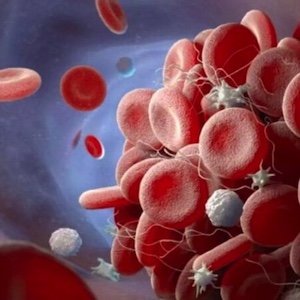Reviews
Vol. 4 No. 1 (2025)
Vasculopathy: a possible factor affecting hereditary angioedema

Publisher's note
All claims expressed in this article are solely those of the authors and do not necessarily represent those of their affiliated organizations, or those of the publisher, the editors and the reviewers. Any product that may be evaluated in this article or claim that may be made by its manufacturer is not guaranteed or endorsed by the publisher.
All claims expressed in this article are solely those of the authors and do not necessarily represent those of their affiliated organizations, or those of the publisher, the editors and the reviewers. Any product that may be evaluated in this article or claim that may be made by its manufacturer is not guaranteed or endorsed by the publisher.
Received: 25 July 2024
Accepted: 9 January 2025
Accepted: 9 January 2025
669
Views
236
Downloads
Similar Articles
- Roger Lijnen, Désiré Collen, The key to fibrinolysis and thrombolysis , Bleeding, Thrombosis and Vascular Biology: Vol. 4 No. 3 (2025)
- Augusto Di Castelnuovo, The evolution of hemostasis genetics: from monogenic disorders to complex traits. A historical perspective , Bleeding, Thrombosis and Vascular Biology: Vol. 4 No. 2 (2025)
- Alice Lipari, Esmeralda Capristo, Antonietta Ferretti, Erica De Candia, Anticoagulation in obese patients: challenges and strategies , Bleeding, Thrombosis and Vascular Biology: Vol. 4 No. 3 (2025)
- Massimo Franchini, Daniele Focosi, The changing landscape of treatment for acquired hemophilia A , Bleeding, Thrombosis and Vascular Biology: Vol. 4 No. 1 (2025)
- Jingnan Huang, Delia I. Fernández, Jinmi Zou, Xueqing Wang, Johan W.M. Heemskerk, Ángel García, Restrained glycoprotein VI-induced platelet signaling by tyrosine protein phosphatases independent of phospholipase Cγ2 , Bleeding, Thrombosis and Vascular Biology: Vol. 2 No. 3 (2023)
- Boris Shenkman, Ivan Budnik, Yulia Einav, Interaction between adenosine diphosphate receptors and protein-kinase C isoforms in platelet adhesion under flow condition , Bleeding, Thrombosis and Vascular Biology: Vol. 2 No. 1 (2023)
- Mattia Galli, C. Michael Gibson, Dominick J. Angiolillo, Factor XI inhibitors in adjunct to antiplatelet therapy: the ultimate dual-pathway inhibition? , Bleeding, Thrombosis and Vascular Biology: Vol. 2 No. 3 (2023)
- Lisa Pieri, Silvia Linari, Francesca Salvianti, Monica Attanasio, Giancarlo Castaman, Impaired platelet function in Hermansky-Pudlak syndrome associated with novel mutations in HPS3, HPS6 and HPS8 genes , Bleeding, Thrombosis and Vascular Biology: Vol. 3 No. 3 (2024)
- Robert Parambi, Nicole Ziliotto, Francesco Bernardi , Marcello Baroni , Richard W Browne , Dejan Jakimovski, Bianca Weinstock-Guttman, Robert Zivadinov, Murali Ramanathan, Crosstalk between hemostasis inhibitors and cholesterol biomarkers in multiple sclerosis , Bleeding, Thrombosis and Vascular Biology: Vol. 1 No. 3 (2022)
- Loredana Bury, Paolo Gresele, The amazing genetic complexity of anucleated platelets , Bleeding, Thrombosis and Vascular Biology: Vol. 1 No. 2 (2022)
1-10 of 13
Next
You may also start an advanced similarity search for this article.











